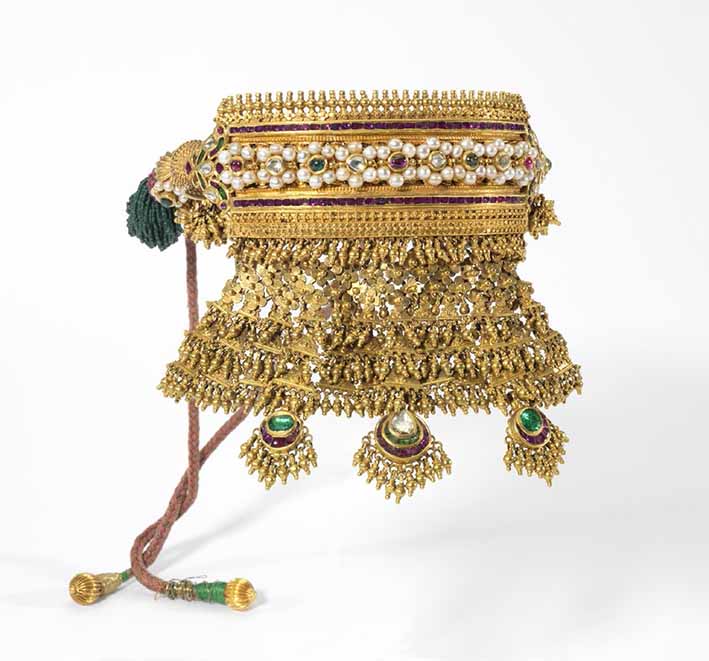Enduring Splendour Jewellery of India’s That Desert exhibition explores the traditions of Indian jewellery against the background of a 5,000-year history of jewellery making across the Indian subcontinent as a whole. Drawing on recent field research carried out in the city of Jaisalmer, a thriving centre of contemporary jewellery production, the exhibition looks at the lives and work of sonis (silversmiths or goldsmiths) and the symbiotic relationships that exist between jewellery and society, artist and jewellery, and artist and society.
Ronald and Maxine Linde Collection of Jewelry and Ritual Arts of India
The exhibition focuses on the rich and diverse silver jewelry traditions of India’s Thar Desert region, stretching across the western states of Rajasthan and Gujarat. These traditions are considered against the background of the five-thousand-year history of jewelry making across the vast Indian Subcontinent. To contextualize this recent production, numerous illustrations of very fine examples of 19th- and 20th-century jewelry types that are still worn are included in the exhibition.
These objects have been borrowed from the Ronald and Maxine Linde Collection of Jewelry and Ritual Arts of India, part of a promised gift to UCLA, where it will find its future home with the Fowler Museum. The Linde Collection is one of the finest and most comprehensive collections of Indian jewelry in the world. This volume highlights elaborate rural styles rendered in silver as well as selected ornate examples, largely associated with the elite, made with gold and gemstones.
The Fowler Museum Commission of New Silver Works
The Fowler Museum also commissioned new silver works from four contemporary smiths, who executed and transformed traditional designs and techniques of manufacture in distinctive ways. A highlight is these commissioned objects, contextualised by a survey of 19th- and 20th-century jewellery types still worn by rural men and women from Rajasthan and Gujarat.
These older examples include earrings, anklets, bracelets, and necklaces and are borrowed from the Ronald and Maxine Linde Collection, one of the most comprehensive collections of Indian jewellery in the world.
The exhibition is divided into three sections, the first is an introduction to long-standing jewellery traditions on the Indian subcontinent using sculptures and paintings from LACMA’s collections, to explore ancient times through to the 17th and 19th century alongside jewellery from the Linde Collection.
The second section focuses on 19th and 20th century jewellery from the Linde Collection that represents the traditions of the Thar Desert, India’s natural western border with Pakistan. The final section shows the newly commissioned work of the four sonis from Jaisalmer, accompanied by videos placing the jewellery into a living context.
Until 18 June at Fowler Museum at UCLA, Los Angeles, www.fowler.ucla.edu. A catalogue accompanies the exhibition.







